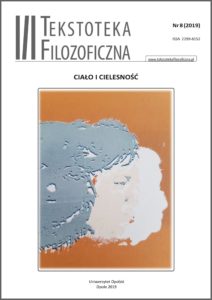Klasyczne i nieklasyczne wyobrażanie ciała w sztuce średniowiecznej – wizualizacja uczuć i emocji człowieka czy dekonstrukcja ciała?
Classical and non-classical visualizations of the body in Mediaeval art. Visualization of human feelings and emotions or the deconstruction of the body?
Author(s): Małgorzata Urszula MazurczakSubject(s): Cultural history, Visual Arts, Middle Ages, History of Art
Published by: Uniwersytet Opolski
Keywords: classical; non-classical; construction; deconstruction; objective; subjective; emotional; open;
Summary/Abstract: The issue of the body and of human carnality in visual arts was the object of research in every period of art history, in particular, of the Mediaeval art research. Medievalists provided rich sources of writings on the subject from the historical, philosophical and biblical anthropology. Discovering the relationships between the matter of the body and the spirituality of the man resulted from the search of the Antique tradition still present in the Middle Ages. The Middle Ages were the period of the development of the syntheses of how the human body and carnality were perceived in the Old Testament Hebrew, in the Gospel and in the Greek tradition. These aspects are included in the philosophical writings and in the Mediaeval literature which greatly influenced the understanding of the body and of carnality. This article is a discussion about the relationships between the categories of realism and idealism in indicating the world of human senses in various periods of the court or bourgeouis Mediaeval art. These categories are connected with the issues of classical forms or their non-classical opposites.
Journal: Tekstoteka Filozoficzna
- Issue Year: 2019
- Issue No: 8
- Page Range: 6-19
- Page Count: 14
- Language: Polish

